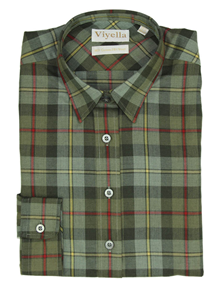With Halloween behind us, the next event in the
social diary is, of course, Bonfire Night.
As a celebration it is, unfortunately, quickly
becoming overshadowed by the lure of Halloween, but with the right
planning, a Bonfire party can be a great night, guaranteed to draw in
friends and neighbours looking to avoid the overpriced and crowded
organised events.
The tradition of lighting bonfires in November
precedes the Gunpowder plot. In Ireland and Scotland fires were lit
on the hilltops on the 1st of November to mark the first
day of winter. In North Wales the autumnal fire was called coel coeth
and was accompanied by rituals such as leaping through the fire,
throwing nuts into the fire and biting at apples suspended from a
string.
This history of bonfire night should be taken as
encouragement to celebrate the start of winter with the community and
share some warming, wholesome food. No Bonfire party would be
complete without good, hearty food, to give your guests something to stay for and
chat over after the excitement of the fireworks. Why not try spicy
sausages in french baguettes with mustard and caramelised onions, or
homemade beef burgers in seeded baps. Cups of pumpkin soup are a
great way to use up the halloween pumpkin and baked camembert with
rustic garlic bread is a great sharing dish to bring everyone
together.
Toffee Apples are a favourite with both children
and adults and BBC Good Food gives us a simple recipe or these festive
treats:
- 8 Granny Smith apples
- 400g golden caster sugar
- 1 tsp vinegar
- 4 tbsp golden syrup
- Place the apples in a large bowl, then cover with boiling water (you may have to do this in 2 batches). This will remove the waxy coating and help the caramel to stick. Dry thoroughly and twist off any stalks. Push a wooden skewer or lolly stick into the stalk end of each apple.
- Lay out a sheet of baking parchment and place the apples on this, close to your stovetop. Tip the sugar into a pan along with 100ml water and set over a medium heat. Cook for 5 mins until the sugar dissolves, then stir in the vinegar and syrup. Set a sugar thermometer in the pan and boil to 140C or 'hard crack' stage. If you don’t have a thermometer you can test the toffee by pouring a little into a bowl of cold water. It should harden instantly and, when removed, be brittle and easy to break. If you can still squish the toffee, continue to boil it.
- Working quickly and carefully, dip and twist each apple in the hot toffee until covered, let any excess drip away, then place on the baking parchment to harden. You may have to heat the toffee a little if the temperature drops and it starts to feel thick and viscous. Leave the toffee to cool before eating. Can be made up to 2 days in advance, stored in a dry place.
Another Bonfire favourite is the hog roast. A
simple recipe to prepare in advance is pulled pork. Cooked slowly,
pulled pork is tender and delicious and will leave your house
smelling wonderful! Try BBC Good Food's recipe for Maple Mustard
Pulled Pork, served with soft baps at your party .
- 200g sea salt
- 300g light muscovado sugar
- 2kg/4lb 8oz piece pork shoulder
- 100ml maple syrup
- 100g wholegrain mustard
- 2 tbsp English mustard powder
- Mix the sea salt and 200g of the sugar in a large food bag, add the pork and coat it well. (If you don’t have a bag, rub over the pork in a dish and cover with cling film.) Leave in the fridge overnight.
- The next day, remove the pork and wipe down the meat with kitchen paper. Heat oven to 140C/120C fan/gas 1. Mix the remaining sugar, the maple syrup, mustards and some ground pepper. Rub half the mixture over the pork and sit it on a rack in a roasting tin. Roast for 6 hrs.
- Spoon the remaining maple mixture over the pork and roast for 1 hr more.
- Rest the meat for 30 mins on a plate loosely covered with foil. To serve, tear the pork into big fat chunks and, after skimming the surface, spoon over any juices from the tin.












































